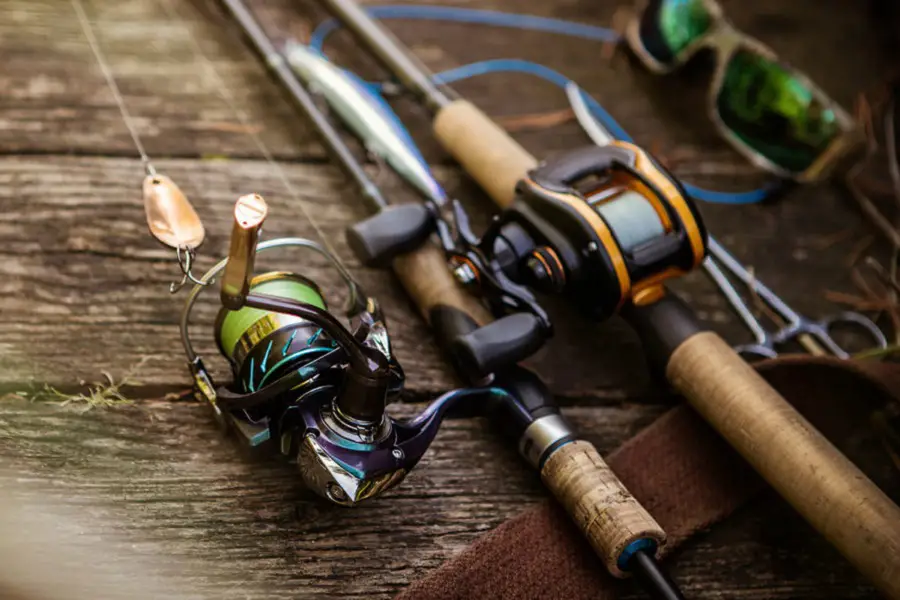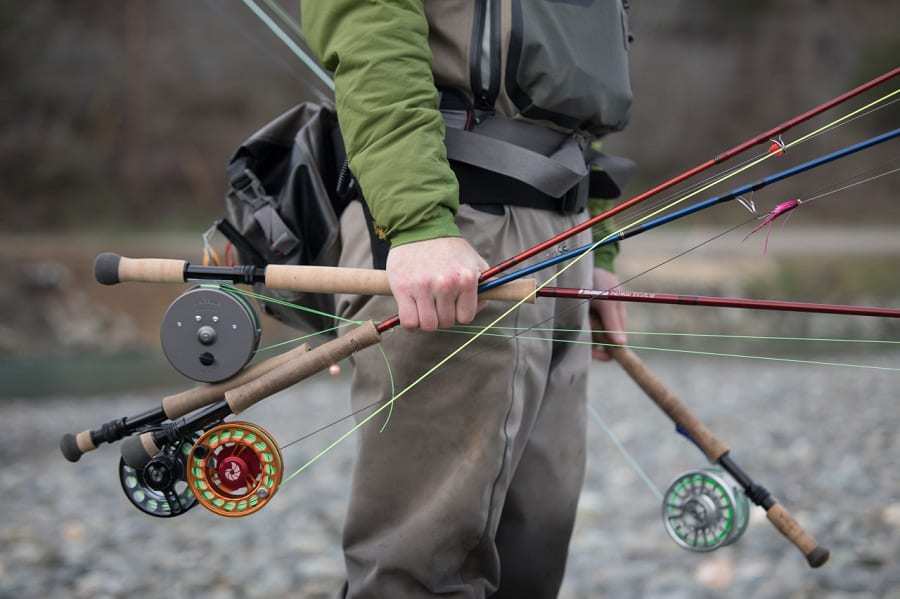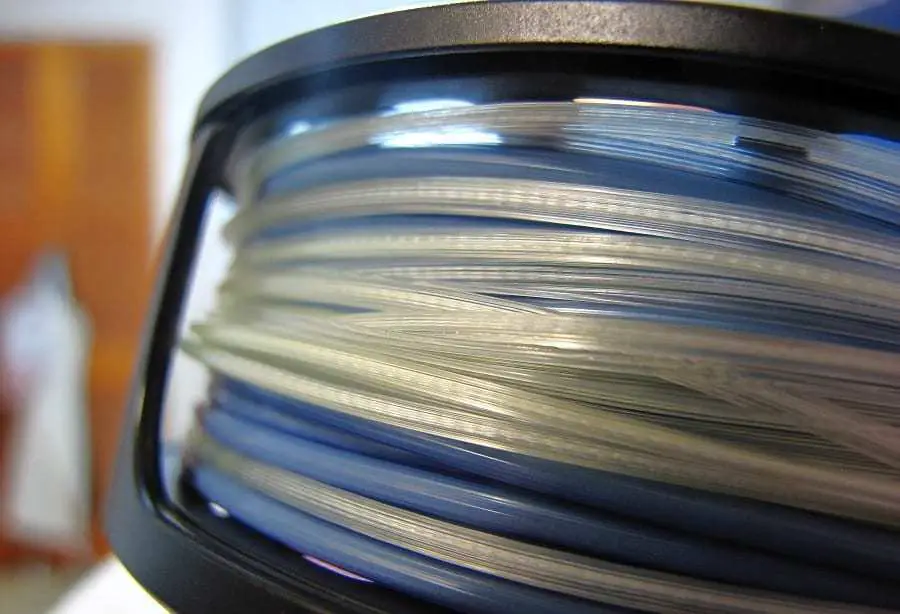Are you torn between a baitcaster and spinning reel and can’t decide which one is best? Maybe you are looking for a new reel and can’t decide between these popular choices?
Well, you aren’t alone!
It’s a question that haunts many anglers as they hunt for their new reel. And it’s a tough question to answer!
To find out which reel is best, you need to understand the difference between the reels, their pros and cons, and what type of fishing they are best suited for.
And finding that information can be challenging, can’t it?
Often we find ourselves in an endless scrolling cycle, determined to find the answers we need, but coming up empty-handed. Well, no more!
Today we are here with the answers you need. Keep reading to find out all you need to know about baitcasting and spinning reels and find the best one for you!
What’s the difference between a spinning reel and a baitcaster?
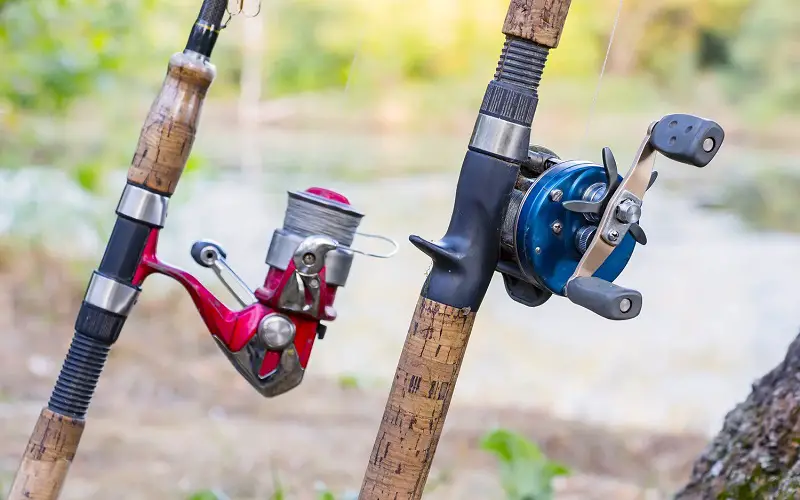
Let’s get straight into it and look at the differences between these two reels! Baitcasters feature a rotating spool that’s attached to the top of the fishing rod.
The spool then rotates when the handle on the side of the reel is turned. This process spools line onto the reel for you to cast with.
Spinning reels, on the other hand, work differently. They are attached to the bottom of the fishing rod, and the spool does not rotate.
A bail arm will rotate around the spool instead, spooling the line onto the spool. You can rotate the bail arm by turning the handle on the side of the reel, creating the spinning motion the reel gets its name from.
So how do you catch lures with these reels? With a baitcaster, the spool is released and rotates at high speed, which will release the line during the cast.
The ball bearing system allows the line to unwind, rotating smoothly and quickly during the cast.
Spinning reels work differently, and the bail arm folds back, allowing the line to slip off the reel, and there is no rotating while casting, as we see with baitcasters.
Now that we have established the differences between these reels let’s dive in closer and learn more about baitcasters and spinning reels.
What are baitcasting and spinning reels used for?
So what are these reels used for? Well, both baitcasters and spinning reels are fairly versatile and come with a wide range of applications.
Baitcasters are used for light spin fishing, surf casting, big game fishing, and anything in between!
They are typically used in North America when anglers fish in freshwater for bass, and we often see this as lure casting for bass.
Spinning reels also have a range of uses, from spin fishing and surfcasting to offshore fishing. However, these reels tend not to be used for heavy applications.
For those looking to do big game fishing, you would be better suited to baitcasters that usually handle the heavier loads.
It might seem confusing that these different reels can be used for the same situations, but some differences set them apart.
Looking at these differences can help you determine which is the better reel for you! So let’s move on to do that now.
Pros and cons of baitcasting reels
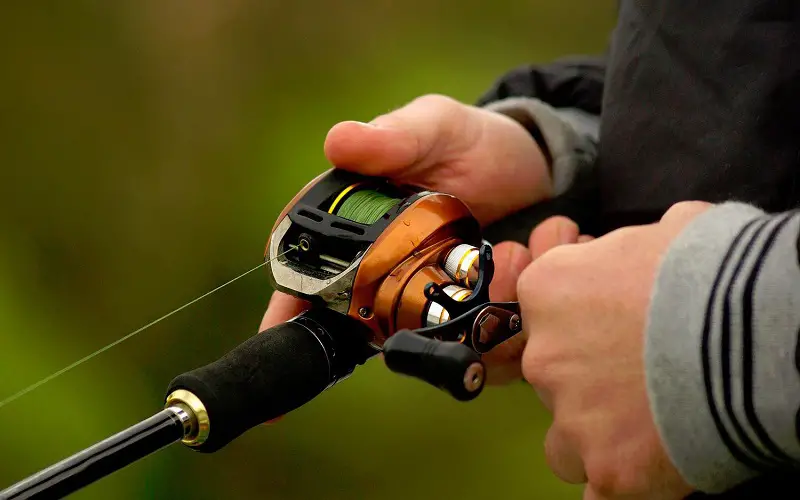
To help you see the different ways baitcaster and spinning reels perform, we have pulled together a list of their pros and cons.
Use this to see the different ways that baitcasters and spinning reels will perform in different situations. First up, we have baitcasters!
Pros
- Lighter than spinning reels and easy to handle
- Durable and stand the test of time
- Able to cast for long distances
- Very accurate when casting
- Capable of handling heavy lures
- Larger models have the higher line capacity
Cons
- Tricky to use, especially for beginners
- Not the best for casting light lures
- Usually more expensive than spinning reels
- Greater chances of backlash when casting
- Need to adjust spool tension for different sized lures
What are the advantages of a baitcaster vs. spinner?
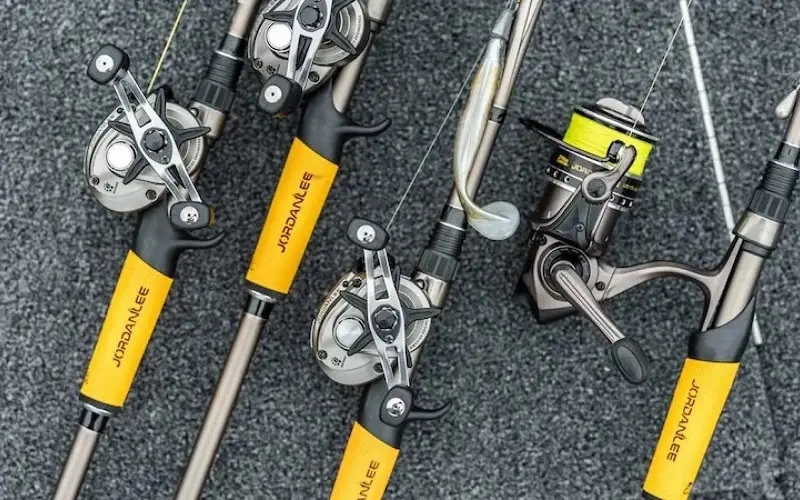
So are baitcasters the one for you? Let’s take a closer look at some of their advantages to help you finalize your decision.
Baitcasters are usually better quality than spinning reels, and they will not only achieve further distances but deliver greater accuracy, too, reducing your chances of rogue rods missing fish!
They are also more durable and usually last longer than spinning reels, offering you better value for money.
However, baitcasters can be expensive and often price beginners out. If you don’t have the budget, it can be difficult to justify a baitcaster.
We do recommend shopping around and taking advantage of any sales to ensure better value for your money.
Baitcasters are also not the easiest to use, and if you aren’t familiar with them, they can be tricky to master and often very difficult for beginners.
In these cases, be sure to check out the wealth of online tutorials for further help and advice. They are a fantastic way to learn more about your new reel and get to grips with it if you aren’t sure!
Baitcasters are harder to master than spinning reels, and you should be aware of this before making your decision.
But why are they harder to use? Well, when you begin the casting process, you see why! When casting, you need to use the spool tension controlled by an adjustable tension system. Its job is to slow down spool rotation when casting to ensure that your line remains smooth.
If the spool isn’t slowed down during the cast, then it will continue to rotate quickly even after your lure slows down and hits the water.
This leaves you with line backlash and bird’s nest, a nightmare to sort out! Thankfully, there are plenty of tutorials and advice online about this so that you can find plenty of help should this happen to you. But be warned, it is a pain to untangle!
To avoid backlash, you will want to know the main parts of the baitcaster and their functions. Don’t worry; we have an article all about that coming up, so be sure to stick around!
You will also want to know how to spool a baitcaster correctly, as this will help prevent line twisting when you are casting your line.
There is also another way. Placing your thumb on the spool during the cast can help control the rotation of the spool. It will also help to give you accurate control of the casting distance, meaning you can cast the lure into a specific location once you have mastered the technique.
It doesn’t take too long to master the technique, and you can take advantage of tutorials online or ask other anglers you know for some tips and tricks.
Experienced anglers are fountains of free knowledge that you should make the most of where possible!
Baitcasters have plenty of advantages over spinning reels, including their longer and more accurate casting ability.
However, they are more expensive and difficult to master, and it’s worth considering all of these factors before making your decision.
Pros and cons of spinning reels
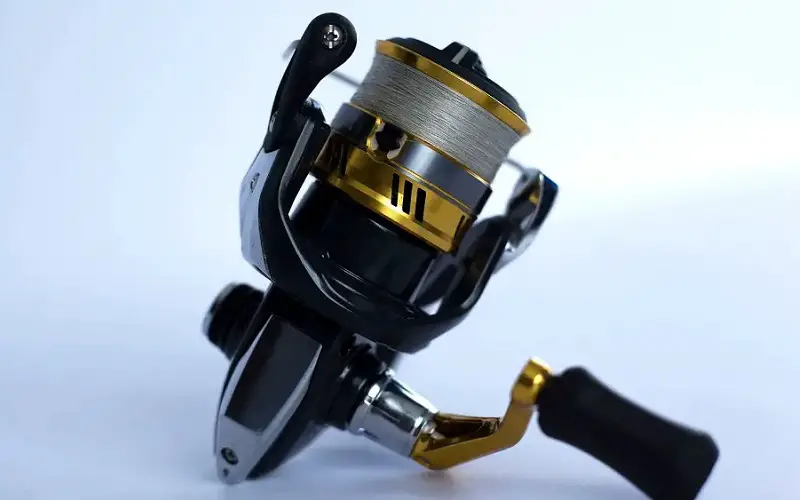
Now that we have covered baitcasters let’s take a closer look at spinning reels. To help you see if spinning reels are the right reel for you, we have some pros and cons of these reels for you to explore. Let’s take a look at them now!
Pros
- Easy to use
- Cheaper and more affordable than baitcasting reels
- Versatile
- Easy to change the spool
- Maintenance is simple and easy to do
- Perfect for casting ultralight lures
- No backlash when casting
Cons
- Not the best for heavy lures
- Struggles with big game fish
- Not very durable compared to baitcasters
- Quite heavy, especially when compared to baitcasters
- Less accurate and have a lower casting distance than baitcasters
What are the advantages of a spinning reel vs. a baitcaster?
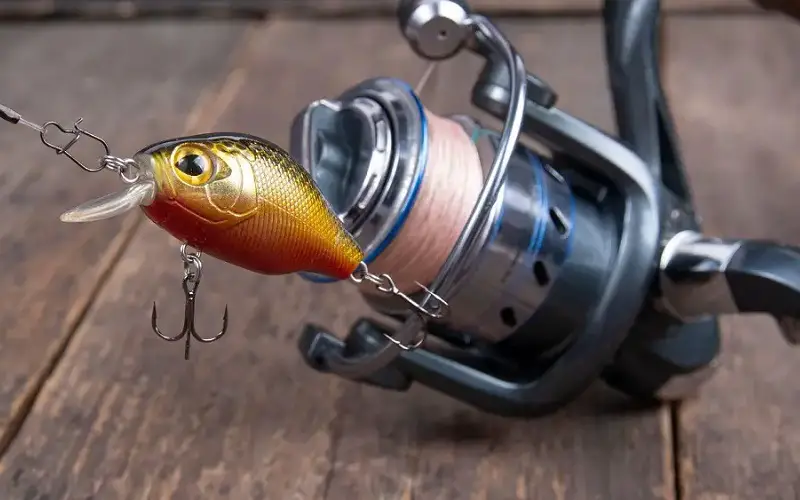
Do you want some more information? Then let’s dive in and look at spinning reels in a little more detail. Spinning reels are more affordable than baitcasters, making them a popular choice for beginners or those with a smaller budget.
They are also far easier to use, making them the ideal reel for situations that don’t require the added strength of a baitcaster.
Spinning reels are also incredibly versatile, making them ideal for any type of fishing. You can use the reel for spin fishing, bottom fishing, live bait fishing, trolling, and a range of other uses.
So if you like to try out different types of fishing, this could be the reel for you!
There is a downside to these reels, though. Their casting qualities aren’t as good as baitcasters, and they aren’t as accurate, and it’s this lack of accuracy that leads more experienced anglers to choose baitcasters over spinning reels.
You also need to know how to spool a spinning reel correctly; otherwise, you can encounter line twisting and other casting issues. No matter the reel you choose, it’s best to spend some time getting to grips with it before taking it out!
When choosing a spinning reel, be sure to find the right size for your needs! You will also want to familiarize yourself with the different parts of the reel and what they do to get the most out of your reel!
What type of reel is best for bass fishing?
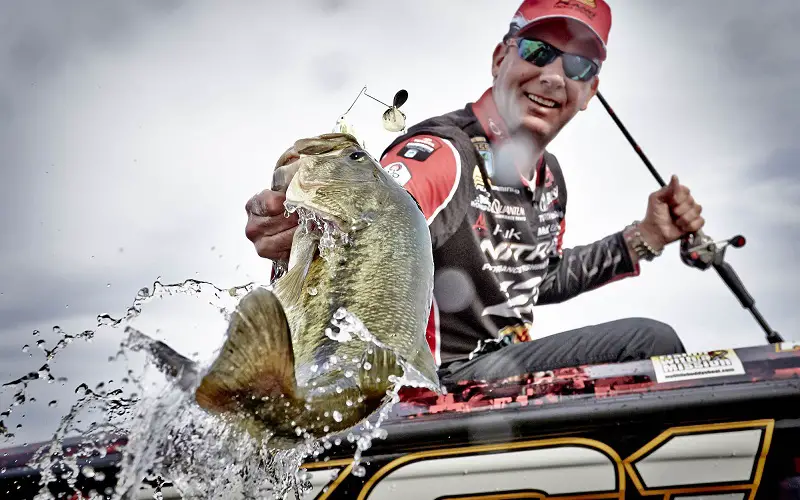
So for those bass fishers in the room, which is the best reel for you? Both reels will work fine for bass fishing; this choice comes down to specific applications and your personal preference.
Baitcasters tend to be the preferred choice as they offer better casting accuracy. As bass are often near thick cover, you need pinpoint accuracy to get your lure in the right place to catch them, which is harder to achieve with a spinning reel!
For those bass fishing from a kayak or a boat, you might be fishing close to the shore. In these cases, you will need to stop the lure before it hits the shore, and the best way to do that is with a baitcasting reel!
The beginners in the room will find it easier to start with a spinning reel, despite the advantages of baitcasters.
Spinning reels are easier to use, and you will still be able to catch plenty of fish and enjoy yourself while you do!
Remember, this is a personal choice, so be sure to consider all the factors before deciding.
Baitcaster vs. spinning reel casting distance
As we mentioned earlier, when it comes to casting distance, the baitcaster is the better reel! You can expect a baitcaster to cast much longer distances than a spinning reel, making them the reel of choice for many anglers!
If you team your surfcasting baitcaster with the right rod and can control the spool rotation during the cast, you are sure to achieve record casting distances!
When we look at baitcasters in this respect, they outperform spinning reels.
Thanks to its longer distances, many anglers prefer a casting reel over a spinning reel that comes in handy when surf fishing.
Conclusion
And just like that, we have come to the end of our article today! As you can see, spinning reels are affordable, versatile, and easy to use, making them a fantastic choice for beginners and a great general reel for more experienced anglers.
Baitcasters, on the other hand, come with higher price tags and can be more challenging to master.
However, they come with far better accuracy and distance, making them a wonderful choice for experienced anglers that want to use these reels for specific applications.
When choosing between the two, be sure to consider what you want from your reel and your budget to help make your decision.
Whether you choose a baitcaster or a spinning reel, you are sure to have a fine reel for fishing!
References:


